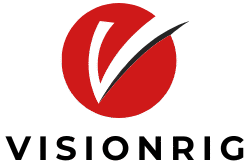Work occupies the bulk of our waking hours. For many, it’s become a source of quiet desperation rather than fulfillment. Despite decades of corporate wellness programs, employee engagement initiatives, and leadership training, global workplace engagement remains stubbornly low. Gallup’s 2023 State of the Global Workplace report reveals that only 23% of employees are truly engaged at work. The rest? They’re sleepwalking through tasks, watching the clock, or actively undermining their workplace. This isn’t just a productivity problem; it’s a human crisis. When work lacks meaning, we don’t just underperform—we wither. Yet a counter-movement is gaining momentum, one that challenges the very foundations of how we design, value, and experience work. This is the story of the quiet revolution to reclaim purpose in our professional lives.
The Engagement Epidemic: Symptoms of a Broken System
Modern workplaces suffer from a profound disconnect between human needs and organizational design. We’ve engineered environments optimized for efficiency and profit, often at the expense of the people who power them. The symptoms are everywhere:
The Burnout Plague: The World Health Organization now classifies burnout as an occupational syndrome characterized by exhaustion, cynicism, and reduced efficacy. It’s not just affecting high-stress professions. Teachers, healthcare workers, tech engineers, retail staff—across sectors, people are running on empty. The root cause isn’t individual weakness but systemic design: unsustainable workloads, lack of autonomy, and insufficient recognition.
The Meaning Deficit: Too many jobs feel like a series of disconnected tasks with no visible impact. Employees answer emails, attend meetings, and generate reports without understanding how their work contributes to something larger. This fragmentation creates what philosopher David Graeber called “bullshit jobs”—roles that exist primarily to sustain organizational bureaucracy rather than serve a genuine purpose.
The Autonomy Gap: Despite rhetoric about empowerment, most workplaces operate on industrial-era control mechanisms. Micromanagement, excessive oversight, and rigid processes strip people of agency. When you can’t make decisions about how or when you work, motivation evaporates. The result is learned helplessness: people stop caring because they’ve been taught their choices don’t matter.
The Recognition Vacuum: Humans crave appreciation and growth. Yet many organizations treat recognition as an afterthought—occasional bonuses or generic “employee of the month” programs. Meaningful acknowledgment requires seeing people as whole individuals with unique contributions, not just cogs in a machine. Without this, work becomes transactional rather than relational.
Beyond Perks: Redesigning Work for Human Flourishing
The solution isn’t ping-pong tables or free snacks. It’s fundamental redesign centered on human needs. Pioneering organizations are proving that when work aligns with purpose, autonomy, and growth, engagement isn’t just possible—it’s inevitable.
Purpose as Architecture: Companies like Patagonia embed purpose into their DNA. Every employee understands how their work advances the mission: “We’re in business to save our home planet.” This clarity transforms routine tasks into meaningful contributions. A product designer isn’t just creating jackets; they’re developing gear that lasts decades, reducing waste. A supply chain manager isn’t just moving boxes; they’re ensuring fair labor practices. Purpose isn’t a slogan; it’s the foundation of decision-making.
Autonomy as Trust: Basecamp, the software company, operates on radical trust. They’ve eliminated managers, traditional performance reviews, and required hours. Instead, they focus on clarity of expectations and results. Employees work when and where they’re most productive, guided by principles rather than rules. This autonomy doesn’t lead to chaos; it fosters responsibility. When people control their work, they own the outcomes.
Mastery as Investment: Buffer, a social media management company, invests heavily in employee growth. They allocate dedicated time and resources for learning—whether it’s attending conferences, taking courses, or pursuing passion projects. Crucially, they don’t dictate what people learn. Employees choose areas that excite them, knowing that growth benefits both the individual and the organization. This approach treats mastery not as a requirement but as an ongoing journey.
Connection as Culture: Menlo Innovations, a software firm, redesigned their physical and cultural workspace to foster collaboration. They work in pairs, rotating partners frequently to spread knowledge and build relationships. Daily stand-ups focus on progress and support, not blame. The result? High engagement, low turnover, and innovative solutions born from collective intelligence. Connection isn’t forced; it’s woven into how work gets done.
The Individual Revolution: Reclaiming Agency at Work
While systemic change is essential, individuals aren’t powerless. Reclaiming meaning starts with small, intentional choices:
1. Craft Your Job: Job crafting is the art of redesigning your role to align with your strengths and values. This might mean:
- Task Crafting: Seeking projects that energize you, even if they’re outside your formal description.
- Relationship Crafting: Spending more time with colleagues who inspire you and less with those who drain you.
- Cognitive Crafting: Reframing how you see your work—focusing on its impact rather than its mechanics.
A hospital cleaner, for example, might reframe their role from “mopping floors” to “creating healing environments.” This shift transforms routine into purpose.
2. Define Your Non-Negotiables: What matters most to you? Autonomy? Creativity? Collaboration? Stability? Identify your core values and use them as a filter for opportunities. If flexibility is essential, seek roles with remote options. If impact drives you, prioritize mission-driven organizations. Clarity about your non-negotiables prevents settling for environments that erode your well-being.
3. Build Learning Loops: Stagnation kills engagement. Commit to continuous learning, but make it intentional:
- Ask for Feedback: Regularly seek input from colleagues, mentors, and even clients. Frame it as growth, not criticism.
- Experiment: Try new approaches to your work. What happens if you change your process? What can you learn from failure?
- Teach Others: Sharing knowledge deepens your understanding and builds connections.
4. Cultivate Micro-Moments of Meaning: Not every task will feel profound. Find small ways to infuse purpose:
- Connect to Impact: Before starting a task, ask: “Who benefits from this?” Visualize the person on the receiving end.
- Practice Gratitude: Acknowledge colleagues who help you. Send a quick note thanking someone for their support.
- Focus on Excellence: Take pride in doing something well, even if it seems mundane. A perfectly formatted report or a thoughtfully crafted email reflects care.
5. Advocate for Systemic Change: Individual actions matter, but collective action creates transformation. Join or initiate conversations about workplace culture. Propose experiments like flexible hours, cross-functional projects, or peer recognition systems. Change starts when people speak up.
The Organizational Imperative: Why Meaning Drives Performance
Skeptics argue that purpose and engagement are “soft” concerns. The data proves otherwise. Organizations with high engagement outperform those with low engagement across every metric:
- Profitability: Engaged teams show 21% higher profitability (Gallup).
- Productivity: Highly engaged businesses are 17% more productive (McKinsey).
- Innovation: Purpose-driven companies are 3x more likely to retain talent and 2.5x more likely to innovate (EY).
- Resilience: During crises, engaged organizations adapt faster because people care enough to solve problems creatively.
Meaning isn’t a luxury; it’s a competitive advantage. When people believe their work matters, they bring their full selves to the table. They solve harder problems, serve customers better, and stay longer. The cost of disengagement? In the U.S. alone, it’s estimated at $450-550 billion annually in lost productivity.
The Future of Work: Human-Centered by Design
The quiet revolution in meaningful work isn’t about returning to some idealized past. It’s about leveraging what we know about human motivation to design better futures. Key trends are reshaping workplaces:
The Four-Day Work Week: Trials globally show that reducing hours without cutting pay increases productivity and well-being. When people have time to rest, pursue passions, and connect with loved ones, they bring more energy and creativity to work.
Skills-Based Organizations: Companies like Unilever are moving away from rigid job descriptions toward fluid roles based on skills. This allows people to contribute in diverse ways, grow continuously, and find projects that align with their evolving interests.
Purpose-Driven Leadership: Leaders are shifting from command-and-control to coaching and inspiration. They ask: “How can I help my team succeed?” rather than “Why isn’t this done yet?” This approach builds trust and unlocks potential.
Well-Being as Strategy: Forward-thinking organizations treat mental health, flexibility, and work-life harmony as strategic priorities, not perks. They recognize that sustainable performance requires sustainable people.
The Japanese Concept of “Ikigai”: A Framework for Meaning
The Japanese concept of ikigai—”a reason for being”—offers a powerful framework for meaningful work. It sits at the intersection of four elements:
- What You Love (Your Passion)
- What You’re Good At (Your Vocation)
- What the World Needs (Your Mission)
- What You Can Be Paid For (Your Profession)
Meaningful work doesn’t require all four elements to be perfectly balanced, but it thrives where they overlap. A teacher might find ikigai in nurturing young minds (passion + mission). A craftsperson might find it in creating beautiful furniture (passion + vocation). The key is reflection: Where do these elements converge for you?
Conclusion: The Revolution Starts Within
The crisis of disengagement isn’t inevitable. It’s the result of systems designed for output rather than humanity. Reclaiming meaning in work requires both individual courage and organizational redesign. It starts with asking hard questions: What kind of work do I want to do? What kind of workplace do I want to build?
For individuals, it means crafting your role, advocating for change, and finding purpose in small acts. For organizations, it means redesigning work around human needs—purpose, autonomy, mastery, and connection. This isn’t about working less; it’s about working better, with more heart and impact.
Imagine a world where most people look forward to Monday. Where workplaces are communities of purpose, not just places to collect paychecks. Where creativity and care replace cynicism and burnout. This world isn’t a fantasy. It’s already emerging in pockets of innovation and courage.
The quiet revolution won’t be televised. It will unfold in team meetings where people speak honestly about their needs. It will grow in organizations that measure success by human flourishing, not just profit margins. It will take root in individuals who choose to bring their whole selves to work.
Work is too central to our lives to be merely endured. It has the potential to be one of our greatest sources of meaning, growth, and connection. The revolution begins when we refuse to settle for less. What role will you play in reclaiming the purpose of work?


